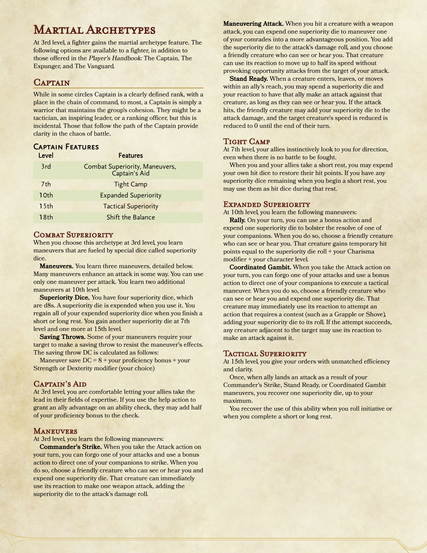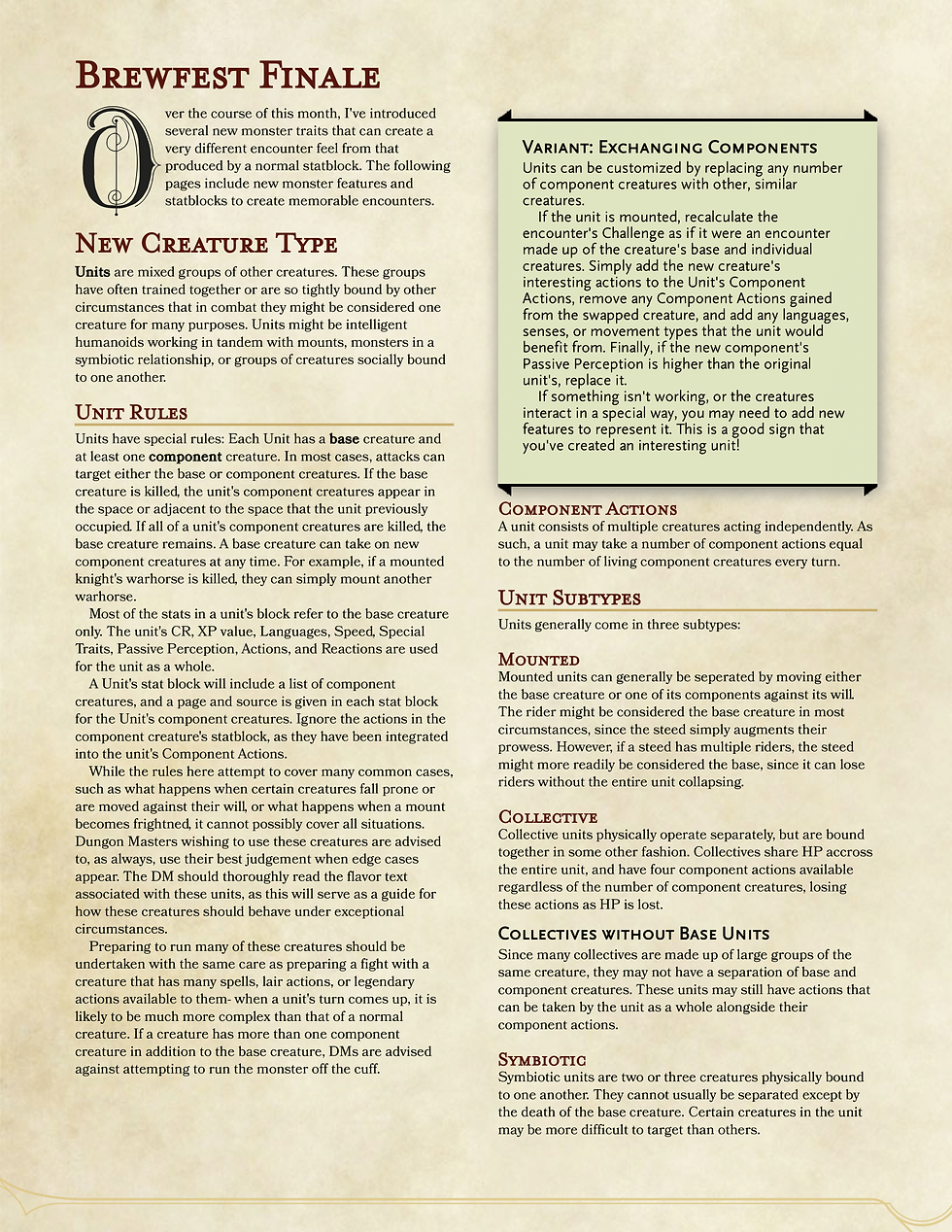Anvil: Robilar's Treatise on Combat (Ch 1.)
- The Forgemaster

- Dec 12, 2020
- 4 min read
Updated: Dec 14, 2020
(Skip to the bottom of the article, or click here, to skip my musings on combat superiority and get to the mechanics)
Lately, I've been reviewing the wealth of Unearthed Arcana content that's been released over the years. Originally, this was done with the intent of cataloguing the content that hasn't yet made it into official publication, and where some content that vanished might have wound up.
But what's been interesting about this undertaking is that you can definitely see where the team at WotC has struggled with their content.
I don't say this to disparage the talent at WotC- struggling creatively is a good thing, it's an indication of willingness to experiment and find the right fit. That being said, of all the Archetypes that haven't made it into print, the majority fall under the Fighter's banner. This is where WotC had to work the hardest to find a direction. There's a lot to talk about there- the original direction of the fighter class, the direction that took shape in Xanathar's Guide to Everything, and what we lost along the way.
Namely, there was an approach that WotC tried early on which gave a mechanic called 'Superiority Dice' to nearly every Fighter subclass it released. Many detractors- including myself- thought it made these classes far too similar to the Battle Master archetype found in the Player's Handbook. To an extent, I think that's true.
But I've been thinking a lot about the Battle Master archetype for fighters, and just how flexible and interesting the superiority dice system is. As I look over of the Superior Technique fighting style found in Tasha's Cauldron of Everything, along with a few new maneuvers, I'm becoming more convinced that superiority dice should be more accessible to other fighter archetypes. In fact, I think they should be accessible to other classes where possible.
Superiority Dice offer a form of engagement that WotC has seemingly struggled to provide to the Fighter class for some time now. Superiority dice and their associated maneuvers give characters (and their players) more opportunities to make decisions that influence the battle, rather than relying on a fixed attack cycle or total improvisation.
The more I explore Superiority Dice, the more I'm convinced that battlefield superiority is for everyone. I'm such a strong believer in the engagement and flexibility of Superiority Dice that I wrote an entire Conversion Kit Article about multiclassing into Battle Master to get access to them- however, the bitter irony is that up until Tasha's was released, it was surely easier for a spellcaster to gain meaningful access to superiority dice than it was for a non-Battle Master fighter. Arguably, that's still the case.
What is a Battle Master?
The Battle Master is the originator of the Superiority Dice and Maneuvers I spoke so highly of above and in my conversion kit. More than that, in official rulebooks, the archetype has a near monopoly on these mechanics among fighters.
A Battle Master has a pool of four dice, and spends those dice to fuel a variety of Maneuvers. Mostly, these are special effects that can be attached to a normal attack, though some are defensive in nature or support the Battlemaster's allies. The superiority die is rolled to determine some aspect of how effective the maneuver is, such as damage or accuracy. It's simple, but it solves one of the most common complaints about fighters- that there's nothing to do but hit enemies until they fall.
The Battle Master starts with a kit of three maneuvers, eventually growing to a suite of six, and an equivalent number of superiority dice to spend on them. These dice refresh on any short or long rest, meaning that while a Battle Master isn't able to simply spam maneuvers, they don't need to be afraid of seizing an opportunity either.
That said, the problem that superiority dice solve is a problem that other classes face. Rangers and Paladins have their spells, but Warlocks are likely to only cast a single spell before falling back on Eldritch Blasts, and Barbarians largely only have the choice of whether or not to Rage (spoiler: they're going to rage). Rogues may do some clever footwork outside of battle, but during a fight, they simply need to stick to the tank in order to deal their sneak attack damage.
Then of course, the Battle Master's cousins in the Fighter class often struggle as well. Champions and Cavaliers have no levers to pull at all, while Samurai only have an ability akin to rage (and remember- they're going to pseudo-rage). The Arcane Archer, Rune Knight, Psi Warrior, and Eldritch Knight only exacerbate the problem- they all offer that engagement through a form of magic.
Establishing Battlefield Superiority
Before I continue, I want to acknowledge that technically, the two means by which non-Battle Master characters can acquire superiority dice are optional rules.
Multiclassing and Feats might be passed up by a DM or player for a variety of reasons, and the rulebooks explicitly make it possible. However, both options are presented in the Player's Handbook rather than the Dungeon Master's Guide and have a long history in DnD, so I'm inclined to believe that they're inclusion in a game is assumed, rather than the other way around.
But with all of that said, I'm beginning work on a rather extensive homebrew that seeks to expand on this concept, latching on to some old-school fighter design, bringing some new feats to the table, and eventually, a crafting system, to make each martial character more expressive than ever before.
And it all starts with combat superiority.













Comments